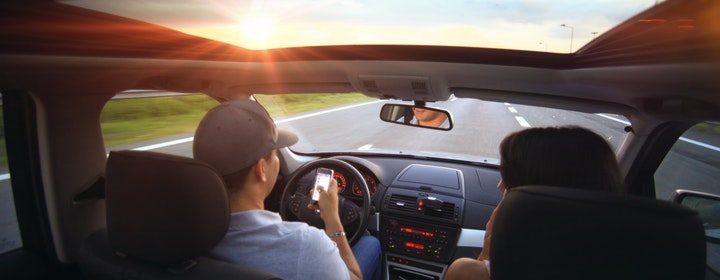Have you watched the Western Cape’s recent anti texting-while-driving advert? It’s quite brutal. Some people argue that the local government has gone too far, while others maintain that this kind of shock factor is exactly what is needed to deter drivers from texting behind the wheel.
But whatever your opinion, the fact that there is any kind of need for this campaign highlights that there is a real issue at hand. Lots of drivers are wreaking havoc on South African roads, and local authorities are rightfully determined to call attention to the results of reckless actions.
This advert is part of a wider initiative to encourage drivers to arrive safely home, while respecting the rules of the road. The dangers of driving while intoxicated have been well publicised, but this recent development of distracted driving could be even more deadly. The #ItCanWait campaign carries the message that if “you can’t even text and walk, why do you text and drive?”
There is clearly a widespread problem in modern times of texting, or generally using cell phones, while driving. In South Africa, the legal drinking limit for driving is a blood alcohol concentration (BAC) of no more than 0.05 grams per 100 millilitres. However, research indicates that texting while driving is more dangerous than driving with a blood alcohol level of 0.08 grams. This is, therefore, clearly not an issue to be taken lightly.
The demanding nature of text messaging — requiring manual, visual and cognitive attention — makes it one of the most problematic driving distractions. However, the question is: How can you prove that someone caused a motor accident while texting?
With enough evidence to support a claim, South African courts should rule that a driver who is texting while driving is negligent. If you are a victim of that driver’s negligence, you would be entitled to receive compensation for all reasonable damages directly related to the accident.
However, you do need to be able to show proof that someone else’s negligence was the cause of the accident. Although this may sometimes be difficult, there are ways to do this.
After the accident, take photographs of the scene to record the damage, and any traffic signs that the other driver might have missed as a result of being distracted by their phone. If there are any eye witnesses who can confirm that they saw the other driver texting, gather their contact details so that they can provide a statement.
When you report the accident to the police, make sure you state straight away that the other driver was texting, if you believe this to be the case. It is important to be able to present a police report that indicates any reasons for you to believe that a driver was using their phone while driving.
Proof will also hopefully be in the pudding, as a glance at the other driver’s cell phone records will show the time and location that they were using their phone. This will back up any claims of negligence, and your attorney at Henry Shields will advise you as to how this can be done.
Henry Shields Attorneys has had vast success in dealing with personal injury claims that arise from motor vehicle collisions, and the firm has established many landmark cases on which the South African courts rely. The aid of one of the team’s experienced attorneys will be invaluable in making sure you receive the damages you deserve, and they will be able to guide you through the challenging area of the law that involves motor vehicle accident claims (often known as third party claims or RAF claims).

